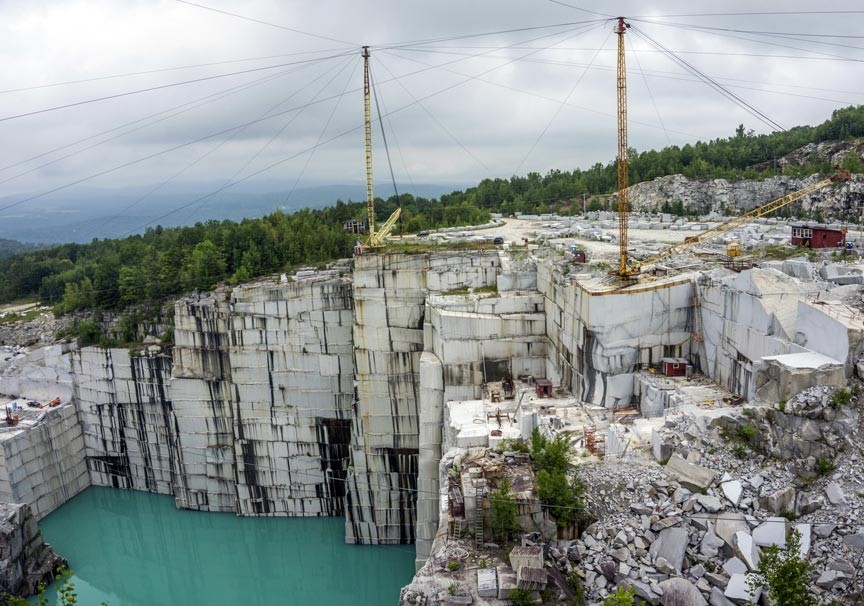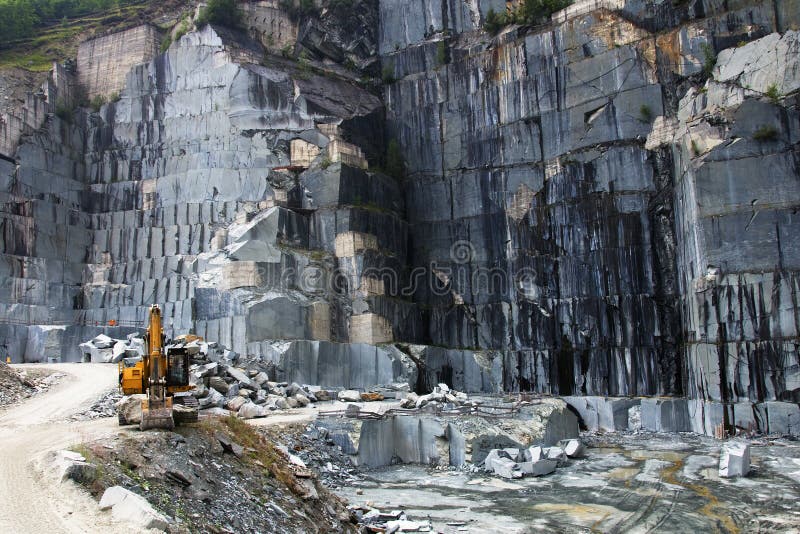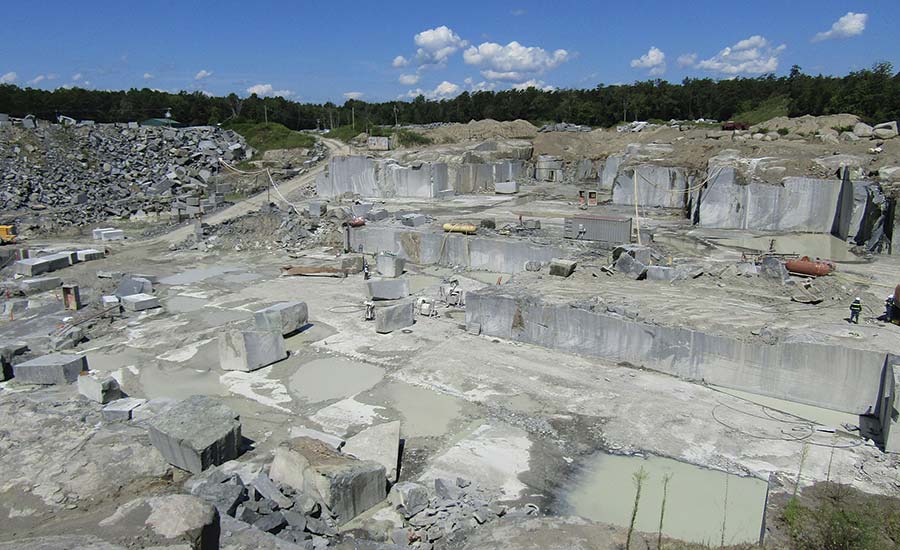Letting Loose the Beauty and Sturdiness of Granite Quarry: A Trip Via Time
Granite quarries stand as testaments to both the geological wonders of our world and the long-lasting workmanship of mankind. The journey through time that granite quarrying represents is a compelling story of technology, willpower, and the elaborate dance in between nature and sector. Recognizing the beginnings of this age-old practice, the evolution of techniques and tools utilized, and the modern significance of granite quarrying reveals a tapestry abundant in background and significance. As we peel off back the layers of time and explore the intricate world of granite quarrying, we reveal a story that not only showcases the appeal and toughness of this majestic stone however also clarifies the profound impact it has had on civilizations past and present.

The Beginnings of Granite Quarrying
In the record of history, the beginnings of granite quarrying can be traced back to ancient people where the quest for long lasting structure materials fueled the emergence of this timeless craft. From the stunning frameworks of old Egypt to the grandiose temples of Greece, granite has been respected for its toughness, elegance, and longevity. The Egyptians, with their advanced quarrying methods, were among the very first to remove granite widespread, using it to construct monumental pyramids and elaborate sculptures that have actually stood up to the examination of time.
As human beings progressed, so did the approaches of quarrying granite. The Romans additionally improved the strategies, establishing devices and equipment to essence and transportation granite over large ranges for their architectural jobs. The toughness and aesthetic allure of granite made it a treasured product for sanctuaries, monoliths, and sculptures throughout the ages.
Today, the tradition of ancient quarrying methods survives on, with contemporary technology enhancing efficiency while still admiring the workmanship of our forefathers. The origins of granite quarrying serve as a testament to human resourcefulness and the long-lasting attraction of this worthy stone.
Devices and Methods of Quarrying
Quarrying granite calls for specific equipment to draw out the stone from the planet effectively and with precision. Modern quarries make use of diamond-wire saws, high-powered drills, and dynamites to break apart the granite in a controlled manner.
Along with sophisticated machinery, typical hand tools are still made use of in specific quarrying operations to make sure delicate accuracy in extracting the stone. Chisels, hammers, and wedges are employed by skilled quarry employees to separate granite obstructs along all-natural fractures, a strategy that has actually been given through generations.
In addition, techniques such as piercing vertical and straight openings for inserting plumes and wedges, in addition to the regulated use of nitroglycerins in strategic places, enable quarry workers to remove granite efficiently while protecting the honesty of the stone. The harmony in between modern technology and standard workmanship is vital to the sustainable quarrying of granite for generations to find.
Evolution of Granite Quarries
The change of granite basics quarries with time discloses a fascinating narrative of technological development and market development. From old times where hand-operated devices like knives and hammers were made use of to remove granite blocks, to the commercial transformation presenting steam-powered equipment for faster quarrying, the weblink advancement of granite quarries has actually been noted by considerable advancements. In current years, the development of diamond wire saws and advanced boring innovations has revolutionized the extraction procedure, permitting extra exact cuts and minimized waste of resources.

Granite Quarrying in Modern Times
The progression of granite quarrying methods from historic reliance on handbook tools to the innovative techniques of modern-day times emphasizes an amazing journey of technical innovation and sustainability practices within the market. In contemporary granite quarrying, advanced equipment such as ruby cable saws, high-capacity excavators, and electronic boring devices have transformed the removal procedure. These tools improve effectiveness, precision, and safety, allowing for larger amounts of granite great site to be removed in a much shorter duration contrasted to standard techniques.
Furthermore, modern quarrying practices prioritize sustainability and ecological stewardship - granite quarries in south africa. Business are progressively adopting environmentally friendly approaches like water recycling systems, dirt suppression technologies, and recovery prepare for exhausted quarries. These campaigns intend to lessen the environmental influence of granite extraction, conserve natural deposits, and recover quarried landscapes to their initial state
Additionally, the integration of electronic technologies like drones, general practitioner tracking, and 3D modeling has allowed quarry operators to maximize operations, boost decision-making, and guarantee the lasting administration of sources. By accepting innovation and sustainability, the granite quarrying market in modern times continues to thrive while maintaining environmental duty.

Maintaining and Shielding Granite Quarries
Amidst the evolving landscape of granite quarrying practices, preservation and security of these useful all-natural websites have actually come to be paramount problems for industry stakeholders and ecological supporters alike. As granite quarries remain to be an important resource of this coveted rock, it is important to take on lasting strategies that guarantee their longevity and protect bordering communities.
Protecting granite quarries entails carrying out effective reclamation strategies to recover the land post-extraction. granite quarries in south africa. This procedure includes improving the surface, replanting indigenous greenery, and developing habitats for wild animals to flourish. By restoring quarries to their natural state, the environmental influence can be reduced, and the beauty of these landscapes can endure for future generations to value
Additionally, protecting granite quarries requires implementing guidelines that govern accountable quarrying methods. This includes tracking water quality, managing dust discharges, and managing sound degrees to alleviate disruptions to the environment and close-by communities. Collaborative initiatives in between market gamers, governmental bodies, and conservation teams are important in promoting these standards and ensuring the sustainable use granite quarries.
Verdict
Finally, the journey through time in granite quarrying discloses the origins, devices, strategies, and evolution of this practice. The modern-day age has actually brought improvements in quarrying methods, enabling the conservation and defense of these important all-natural resources. It is necessary to continue to promote sustainable methods to make certain the charm and sturdiness of granite quarries for future generations to appreciate.